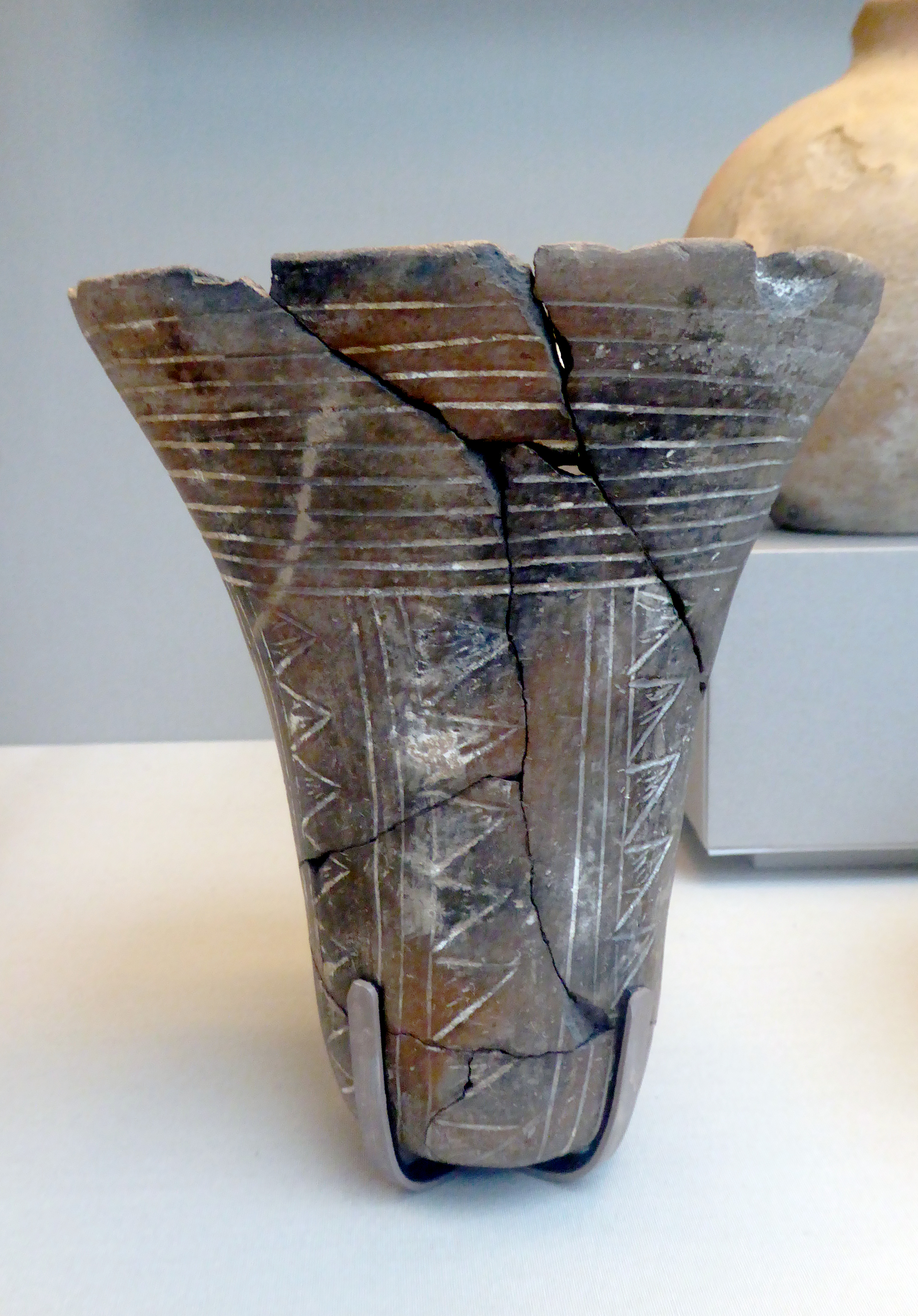Tasian culture on:
[Wikipedia]
[Google]
[Amazon]
The Tasian culture is possibly one of the oldest-known Predynastic culture in 
Tasian - digitalegypt.ucl.ac.uk
{{Ancient Egypt topics Predynastic Egypt 5th millennium BC Archaeological cultures in Egypt Upper Egypt
Upper Egypt
Upper Egypt ( ar, صعيد مصر ', shortened to , , locally: ; ) is the southern portion of Egypt and is composed of the lands on both sides of the Nile that extend upriver from Lower Egypt in the north to Nubia in the south.
In ancient E ...
, which evolved around 4500 BC. It is named for the burials found at Deir Tasa
Deir or DEIR may refer to:
*Ad Deir or The Monastery, a building in Petra, Jordan
*Tell Deir, an archaeological site in Lebanon
* Deir ez-Zor or Ad-Deir, a city in Syria
* Draft environmental impact report, a document required in United States env ...
, a site on the east bank of the Nile
The Nile, , Bohairic , lg, Kiira , Nobiin: Áman Dawū is a major north-flowing river in northeastern Africa. It flows into the Mediterranean Sea. The Nile is the longest river in Africa and has historically been considered the longest riv ...
located between Asyut
AsyutAlso spelled ''Assiout'' or ''Assiut'' ( ar, أسيوط ' , from ' ) is the capital of the modern Asyut Governorate in Egypt. It was built close to the ancient city of the same name, which is situated nearby. The modern city is located at ...
and Akhmim
Akhmim ( ar, أخميم, ; Akhmimic , ; Sahidic/Bohairic cop, ) is a city in the Sohag Governorate of Upper Egypt. Referred to by the ancient Greeks as Khemmis or Chemmis ( grc, Χέμμις) and Panopolis ( grc, Πανὸς πόλις and Π ...
. There is no general agreement about the proposed "Tasian culture", and some scholars since Baumgartel in 1955 have suggested it is a part of the Badarian culture, rather than a separate entity.
The Tasian culture group is notable for producing the earliest black-topped pottery
Black-topped pottery is a specialized type of Ancient Egyptian pottery that was found in Nubian archaeological sites, including Elephantine, an island on the Nile River, Nabta Playa in the Nubian Desert, and Kerma in present-day Sudan. This type o ...
, a type of red and brown pottery, which has been painted black on its top and interior. This pottery is vital to the dating of the various predynastic Egyptian civilizations. Since all dates for the Predynastic period are tenuous at best, Flinders Petrie
Sir William Matthew Flinders Petrie ( – ), commonly known as simply Flinders Petrie, was a British Egyptologist and a pioneer of systematic methodology in archaeology and the preservation of artefacts. He held the first chair of Egyp ...
developed a system called Sequence Dating
Sequence dating, an archaeological relative dating method, allows assemblages to be arranged in a rough serial order, which is then taken to indicate time. Sequence dating is a method of seriation developed by the Egyptologist Sir William Matthew ...
through which the relative date, if not the absolute date, of any given Predynastic site can be ascertained by examining the handles on pottery
Pottery is the process and the products of forming vessels and other objects with clay and other ceramic materials, which are fired at high temperatures to give them a hard and durable form. Major types include earthenware, stoneware and ...
.
As the Predynastic period in ancient Egypt progressed, the handles on pottery evolved from functional to ornamental, and the degree to which any given archaeological site has functional or ornamental pottery can be used to determine the relative date of the site. Since there is little difference between Tasian and Badarian pottery, the Tasian Culture overlaps the Badarian place on the scale between Sequence Dating 21 and 29 significantly.
Excavations of Tasian burials have yielded a number of skeletons. The fossils are generally taller and more robust than later predynastic Egyptian specimens. In this regard, the Tasian skeletons are most similar to those associated with the Merimde culture. Furthermore, although the Tasian crania are dolichocephalic (long-headed) like many of the other predynastic skulls, they have a large and wide vault like the Merimde crania. Skulls excavated from Badarian, Amratian
The Amratian culture, also called Naqada I, was an archaeological culture of prehistoric Upper Egypt. It lasted approximately from 4000 to 3500 BC.
Overview
The Amratian culture is named after the archaeological site of el-Amra, located around ...
, and Natufian
The Natufian culture () is a Late Epipaleolithic archaeological culture of the Levant, dating to around 15,000 to 11,500 years ago. The culture was unusual in that it supported a sedentary or semi-sedentary population even before the introducti ...
sites tend instead to be smaller and narrow.
Archaeological evidence has suggested that the Tasian and Badarian Nile Valley sites were a peripheral network of earlier African cultures that featured the movement of Badarian, Sahara
, photo = Sahara real color.jpg
, photo_caption = The Sahara taken by Apollo 17 astronauts, 1972
, map =
, map_image =
, location =
, country =
, country1 =
, ...
n, Nubia
Nubia () ( Nobiin: Nobīn, ) is a region along the Nile river encompassing the area between the first cataract of the Nile (just south of Aswan in southern Egypt) and the confluence of the Blue and White Niles (in Khartoum in central Sud ...
n, and Nilotic populations. Bruce Williams, Egyptologist, has stated "The Tasian Period is significantly related to the Neolithic of Sudanese-Saharan tradition as found just north of Khartoum and near Dongola in Sudan
Sudan ( or ; ar, السودان, as-Sūdān, officially the Republic of the Sudan ( ar, جمهورية السودان, link=no, Jumhūriyyat as-Sūdān), is a country in Northeast Africa. It shares borders with the Central African Republic t ...
".

References
External links
Tasian - digitalegypt.ucl.ac.uk
{{Ancient Egypt topics Predynastic Egypt 5th millennium BC Archaeological cultures in Egypt Upper Egypt